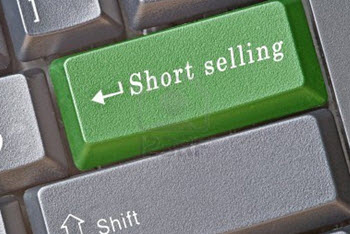Selling short is a practice where an asset is borrowed and then sold. The borrower hopes to make a profit by buying back the asset for a lower price (than what the asset was sold for) before it is time to return the borrowed asset to its owner.
 Short-selling is usually done with shares, stock options, and similar assets where you don’t have to return exactly the object that you borrowed. Short selling a house, a piece of art or similar would be considerably more risky.
Short-selling is usually done with shares, stock options, and similar assets where you don’t have to return exactly the object that you borrowed. Short selling a house, a piece of art or similar would be considerably more risky.
Even with shares, stock options and similar, short-selling is considered a high-risk undertaking, since there is no limit for how much money you can lose. You are obliged to buy back the asset one way or another to return it to its owner, even if the asset has skyrocketed in price since you sold it.
Example #1:
You borrow 100 Apple shares from your stock broker. You sell them for 118 USD per share. (Total: 11,800 USD). Two weeks later, it is time for you to give back 100 Apple shares to your stock broker. The market price for Apple shares is now just 115 USD per share. You purchase 100 shares for a total of 11,500 and give these back to your broker. If we choose to neglect things such as transaction fees, you have made a 300 USD profit.
Example #2:
You borrow 100 Apple shares from your stock broker. You sell them for 118 USD per share. (Total: 11,800 USD). Two weeks later, it is time for you to give back 100 Apple shares to your stock broker. The market price for Apple shares is now 125 USD per share. You purchase 100 shares for a total of 12,500 and give these back to your broker. If we choose to neglect things such as transaction fees, you have made a 700 USD loss.
Since there is no limit for how much the price of a share can rise, there is no limit for how large the purchase price can be when it is time for you to give back the borrowed shares. In the example above, the share price of Apple could have gone up to 200 USD and it would have cost you 20,000 to buy 100 shares.
This article was last updated on: January 18, 2016